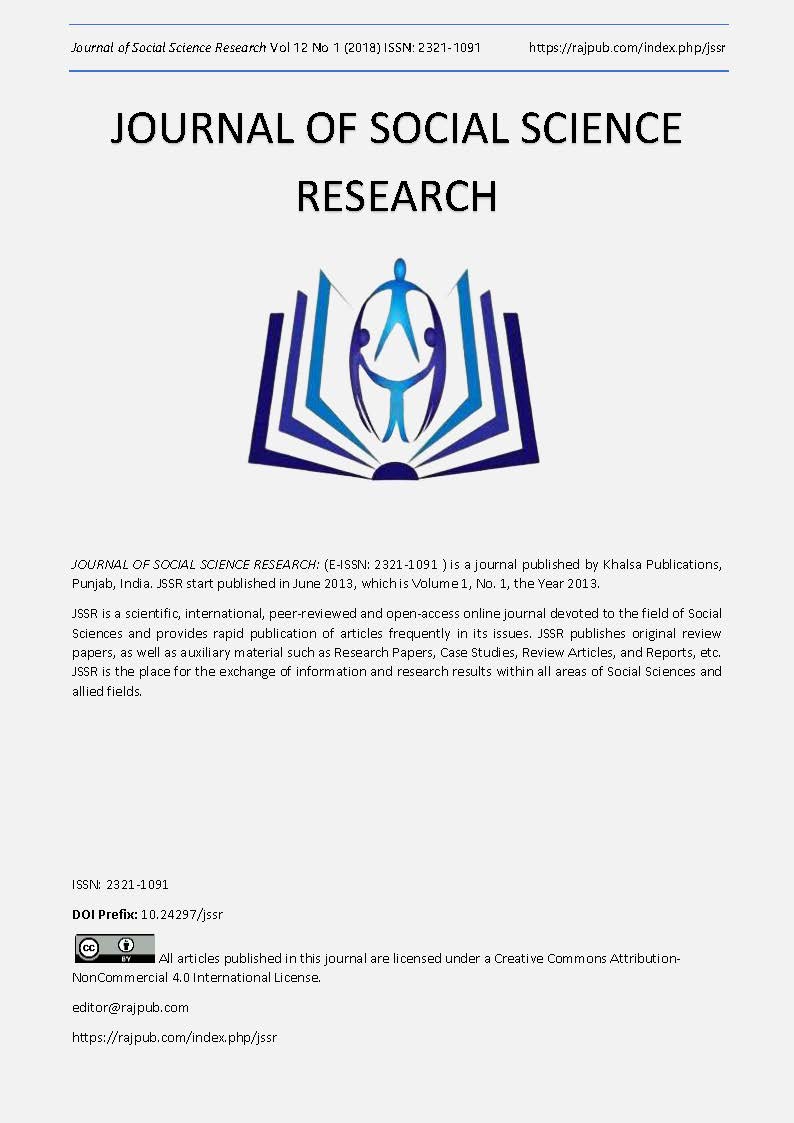Teacher Leadership Model: Roles and Values
DOI:
https://doi.org/10.24297/jssr.v12i1.6994Keywords:
Teacher leadership, roles, valuesAbstract
This project paper aimed at identifying the dimensions for teacher leadership model. The instrument used to measure the dimensions was adapted from Teacher Leadership Self-Assessment (TLSA) by Katzenmeyer and Moller (2009). This measurement tool consists of 47 items distributed into seven dimensions namely 1) self-awareness, 2) leading change, 3) communication, 4) diversity, 5) instructional proficiency and leadership, 6) continuous improvement, and 7) self-organization. This project paper involved 130 teachers of Mara Junior Science Colleges in the state of Kelantan, Malaysia. Structural Equation Modelling technique was utilized to perform the required statistical analysis of the survey data. Exploratory Factor Analysis (EFA) and Confirmatory Factor Analysis (CFA) were carried out to substantiate the dimensions used. Based on the EFA and CFA, 4 dimensions are relevant for teacher leadership practice in Malaysian setting with 28 items identified to have high value of validity and reliability. The four dimensions are labelled as 1) self-awareness, 2) communication and change, 3) diversity and instructional proficiency, and 4) organized and continuous improvement. These dimensions could be characterized as values or roles of teacher leaders.
Downloads
References
2. Berry, B., Daughtrey, A. & Wieder, A. (2010). Teacher leadership: Leading the way to effective teaching and learning. Center for Teaching Quality. Retrieved from https://www.teachingquality.org/content/teacher-leadership-leading-way-effective-teaching-and-learning
3. Bond, Nathan. (Ed.). (2015). The power of teacher leaders. Indiana: Kappa Delta Pi.
4. Browne, M.W. & Cudeck, R. (1993). Alternative ways of assessing model fit. In Bollen, K.A. & Long, J.S. [Eds.] Testing structural equation models. Newbury Park, CA: Sage, 136–162.
5. Cheng, A. Y. N. & Szeto, E. (2016). Teacher leadership development and principal facilitation: Novice teachers’ perspectives. Teaching and Teacher Education, 58, 140-148.
6. Costello, Anna B. & Osborne, Jason. (2005). Best practices in exploratory factor analysis: four recommendations for getting the most from your analysis. Practical Assessment Research & Evaluation, 10(7).
7. Davignon, M.M. (2016). New teachers’ perceptions of teacher leaders: Trust in the educational setting (Doctoral dissertation). Retrieved from https://academicarchive.snhu.edu/handle/10474/2634
8. Fon, T. P. (2016). A study of teachers’ perceptions of involvement in decision making within secondary schools in Cameroon. Journal of Educational and Social Research, 6(2), 165-175.
9. Gronn, Peter. (2000). Distributed properties: A new architecture for leadership. Educational Management Administration Leadership, 28(3), 317-338.
10. Helbert, J. (2015). Developing high quality teacher leadership in a primary school (Paper submitted to the Scottish College for Educational Leadership Fellowship Programes). Retrieved from http://www.scelscotland.org.uk/wp-content/uploads/2016/07/Developing-High-Quality-Teacher-Leadership-in-a-Primary-school
11. Henman, Linda. (2017). Leadership: Theories and controversies. Retrieved from www.henmanperformancegroup.com
12. Holmes-Smith, P., Coote, L., & Cunningham, R. E. (2005). Structural Equation Modelling: From the fundamentals to advanced topics. Melbourne, Australia: School Research, Evaluation and Measurement Services.
13. Katzenmeyer, M. & Moller, G. (2001). Awakening the sleeping giant: Helping teachers develop as leaders. Newbury Park, CA: Corwin Press.
14. Katzenmeyer, M. & Moller, G. (2009). Awakening the sleeping giant: Helping teachers develop as leaders (3rd ed.). Thousand Oaks, CA: Corwin Press.
15. Kementerian Pendidikan Malaysia. (2013). Pelan Pembangunan Pendidikan Malaysia (PPPM) 2013-2025. Putrajaya: Kementerian Pendidikan Malaysia.
16. Krejcie, R. V. & Morgan, D. W. (1970). Determining sample size research activities. Educational and Psychological Measurement, 30, 607-610.
17. Muijs, D. & Harris, A. (2003). Teacher leadership-Improvement through empowerment?. Educational Management & Administration, 31(4), 437-448.
18. Mulford, B. (2003, April). School leaders: Changing roles and impact on teacher and school effectiveness. Paper commissioned by the Education and Training Policy Division, OECD, University of Tasmania.
19. Muncey, D. E. & Conley, S. (1999). Teacher compensation and teacher teaming: Sketching the terrain. Journal of Personnel Evaluation in Education. 12(4), 365-385.
20. Norashikin Abu Bakar, Ramli Basri & Fooi, F. S. (2015). Hubungan kepimpinan Guru dengan pencapaian akademik pelajar. International Journal of Education and Training, 1(2), 1-11.
21. Nolan, B. & Palazzolo, L. (2011). New teacher perceptions of “teacher leader†movement. NASSP Bulletin, 95(4), 302-318.
22. Oracion, C. C. (2014). Teacher leadership in public schools in the Philippines (Doctoral dissertation, University of London). Retrieved from http://eprints.ioe.ac.uk/21652/1/Thesis-final.pdf
23. Sugg, S. A. (2013). The relationship between teacher leadership and student achievement (Doctoral dissertation, Eastern Kentucky University). Retrieved from http://encompass.eku.edu/etd
24. Terry, P. M. (2017). Empowering teachers as leaders. National Forum Journals. Retrieved from http://www.nationalforum.com/Electronic%20Journal%20Volumes/Terry,%20paul%20M.%20Empowering
25. Villiers, E., Pretorius, S. G. (2012). A changing leadership paradigm: South African Educators’ perceptions of the dimensions of a healthy school culture for teacher leadership. Journal of Social Science, 32(2), 205-219.
26. Wenner, J. A. & Campbell, T. (2016). The theoretical and empirical basis of teacher leadership: A review of the literature. Review of Educational Research, XX(X), 1-38.
27. Wills, A. (2015). A case study of teacher leadership at an elementary school (Doctoral dissertation). Retrieved from http://digitalcommons.sacredheart.edu/edl
28. York-Barr, J. & Duke, K. (2004). What do we know about teacher leadership? Findings from two decades of scholarship. Review of Educational Research, 74(3), 255-316.
29. Zainudin Awang. (2012). Research methodology and data analysis (2nd ed.). Shah Alam: UiTm Press.
30. Zainudin Awang. (2012). Structural Equation Modeling Using Amos Graphic. Universiti Teknologi Mara.
Downloads
Published
How to Cite
Issue
Section
License
 All articles published in Journal of Advances in Linguistics are licensed under a Creative Commons Attribution 4.0 International License.
All articles published in Journal of Advances in Linguistics are licensed under a Creative Commons Attribution 4.0 International License.




